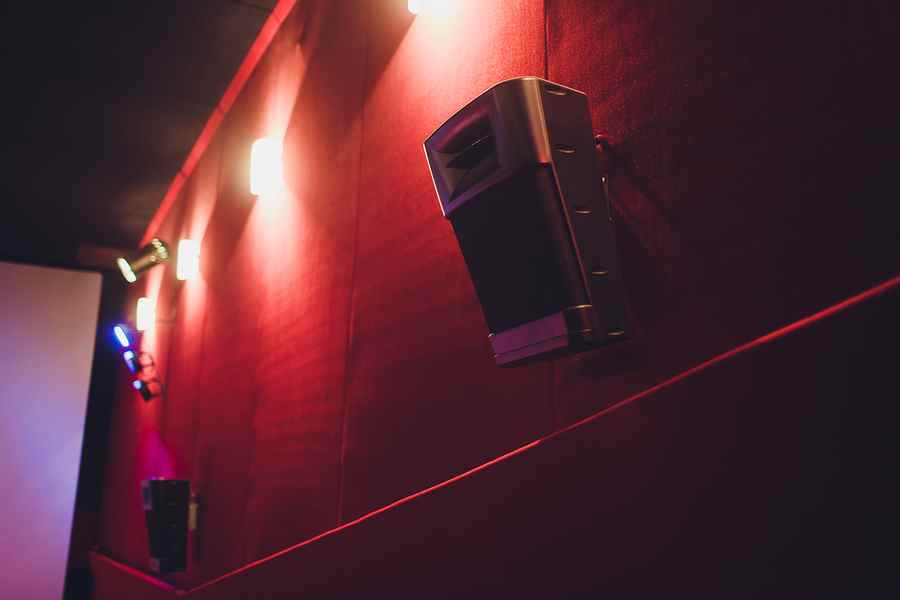Great film scores can stand independently and bring to mind the epic, emotional, intense, or action-packed moments they accompany when you first watch a film.
Doubtless, you have favorite tracks from the films you like, and you may wonder, ‘How do I get great music for my short film?
There are four main options for developing a great score for your short film:
- Hire a dedicated composer who can get you tailor-made music shaped by your direction to fit your film.
- Team up with your favorite indie musician and ask if you can feature some songs royalty-free.
- Platforms like Filmstro offer royalty-free editable compositions, which you can tweak to your pleasure.
- Sites like YouTube’s Audio Library provide free (royalty-free) music, crediting the creators.
Table of Contents
Why is Music Important?

On its own, music has transportive and evocative qualities.
When used correctly in film, music works with your scenes to elicit the emotional response you want from your audience.
As such, the score is a hugely important part of your film.
See five pro tips from a film festival director on how to get your short film selected. Notice number 5, which is about sound!
When should you start to think about the music?
You should think about the score from the beginning of your project.
I don’t mean that you have to be composing melodies in your head when you should be focusing on the production of your film, but you should have an idea about genre and tone—what feelings you’re trying to evoke with the music in any given part of your film.
Doing this will help you avoid aimless searching brought about by a lack of preparation upon picture lock of your edit.
You might like this article on writing a short film logline.
Hiring and Working With a Composer. Here’s some good advice.

This is your best, most collaborative option if you’ve got the budget to pay for one.
There are many great independent composers out there looking for shorts to work on to expand their portfolios.
You might also like the FilmDaft guide to diegetic and non-diegetic music and SFX
Where to find a composer?
But where to find them? Film-related Facebook groups are your friends here. Chances are that you’ll find, if not a composer, then someone who knows of one. Don’t stop there.
Talk to your friends who are involved in the arts as well. See if they know someone they can vouch for.
Send them test scenes.
Once you’ve got yourself a handy crop of candidates, send them all a test scene from the most recent cut of your film.
Please give them a little direction: what are you trying to convey in this scene, how do you want it to feel, etc., and let them compose a quick piece for it. Most composers will be happy to do this. They want to give you a sense of what they can do within your direction.
Once you’ve got your test scores, it’s time to choose who you think hit the mark closest to what you were going for.
Working with the Composer

Your composer will allow you to control how your score is created. You’ll discuss each scene’s themes, mood, tone, and objectives of the short film.
Your composer will want to know exactly where and when you expect music to play.
Usually, a composer wants specifics: Time Code A to Time Code B for each spot that requires music.
You’ll also want to identify points of interest within the scenes that highlight character or story moments with the score. These are commonly manifested as stingers, crescendos, decrescendos, or a marked change in rhythm or melody.
Expect edits
Then, it just becomes a dialogue of back-and-forth. The composer submits rough compositions to you; you give notes, they return with changes, and so on.
Eventually, they’ll have refined the piece to (hopefully) exactly what you’re looking for.
Pay the composers!
Composers won’t usually work for credit, though; they’ve got to eat, and you’ll have to pay them.
On my short films, I’ve been lucky enough to get a “friend” rate from a composer buddy of mine, but most experienced composers will charge anywhere in the ballpark of $500-$1000 for their services.
Don’t let this discourage you. Don’t be afraid to negotiate if your short film is 10-20 minutes long and your budget is small to match. Be upfront about how much you have to spend.
Some composers, especially fresh talent looking to expand their portfolios, will be open to working out a flexible rate that satisfies both of you.
Check out tips for location scouting for your next short film.
Your Favorite Indie Artist

Provided they’re not an internationally renowned pop star or Jay-Z, some independent artists might be receptive to letting other indie creatives use their work.
If that rapper you follow on SoundCloud or the indie punk band whose Facebook page you like has a way to contact them, it might be worth a shot.
Tell them you’re an indie filmmaker working on a short film, a fan of their work, etc. See if they’d be willing to let you use their song in your film for free, credit, or a tiny fee.
Ensure you get it in writing before moseying off to the film festivals with someone else’s copywritten work.
Royalty-Free Music Libraries With “Flexible” Music
Paid platforms offer royalty-free music you can license, download, and edit. There are viable options if you can’t afford a composer’s pay.
The two sites I’m going to talk about both offer a measure of control over already-composed pieces, allowing you to use simple methods to alter the components of the music to suit your film.
This is pretty cool, so let’s dive in.
You can see more free and paid royalty-free music libraries here.
Filmstro
Filmstro.com has the tagline “Take control of your soundtrack.” With three easy elements, it lets you do just that.
Filmstro has an ever-expanding library of music broken down into four simple categories: Mood, Film and Video Genre, Music Genre, and Instrumental Palette. These categories then navigate down into a handful more subcategories, helping you find exactly what you’re looking for.
Once you settle on a piece, you are shown three sliders. This is the core of Filmstro’s appeal and ease of use.
The three sliders are labeled Momentum, Depth, and Power. Shifting these left or right will alter the music you listen to in real time, allowing you to keyframe the track as it progresses and keep the changes you want.
- Momentum doesn’t change the tempo of the music but instead introduces or removes instrumental elements to suggest a quickening or slowing pace.
- Depth deals with the range of high and low-pitch instruments in the piece. All the way left, and it’s all higher-pitched instruments, like violins. All the way right, and you get the bassy, low-end instruments. A nice middle ground gives you both.
- Power is all about the percussive force behind the track. The further to the right you go, the more drumbeats and driving percussion will be introduced. Dialing it left gives you a much quieter, less thumping piece.
And that’s essentially all there is to it.
Keyframing!
Filmstro lets you import a clip directly into their app and drag and drop the music you’re trying out.
Then, you’re up to keyframe the three sliders to the levels you’re satisfied with, shifting them as the scene progresses to achieve the changes you’re looking for. Once you’re done, export the audio and drop it into the timeline of your editing platform.
It’s a simple, intuitive system giving you many options and control over the music. They also provide plug-ins for Premiere Pro and Final Cut.
Using Free Music

If you’re currently strapped for cash but aren’t quite up to using your little brother’s high school garage band screamo records, it’s time to check out some truly free music sites.
YouTube Audio Library
If you visit https://www.youtube.com/audiolibrary/music, you’ll find pages of license-free and cost-free music. YouTube created this library for creators suffering from silent videos due to copyright strikes on their content.
You don’t have to be a YouTuber to take advantage, however. Anyone can download the tracks they want for any outside project, and most of them have no attribution rules, meaning they don’t need any credit given to the artist.
It’s still a nice thing to do, but no one will come after you for electing not to.
That’s not a blanket statement, however!
A few tracks are licensed under Creative Commons and require some crediting. Check the song description for tracks marked with the Creative Commons symbol to credit the composer properly. You can copy and paste this into your credits.
As a bonus, they have sound effects too! To access the YouTube Audio Library, you must have a Google account. That’s it.
Let the Tracks Wash Over You
This article does not list anywhere you can find licensed, royalty-free, or completely free music online.
Still, with the tips and links above, the road ahead of you should be well-stocked with choice musical opportunities for your short film.
The bottom line is that, regardless of your budgetary restrictions, finding unique, high-quality music to accompany your short film is not impossible.
So, toss your brother’s failed EP back into your box of childhood memories where it belongs and say goodbye to the days when a howling wind on the mic was the closest thing you had to a score.
You’re ready for the real deal. Now, get scoring!

